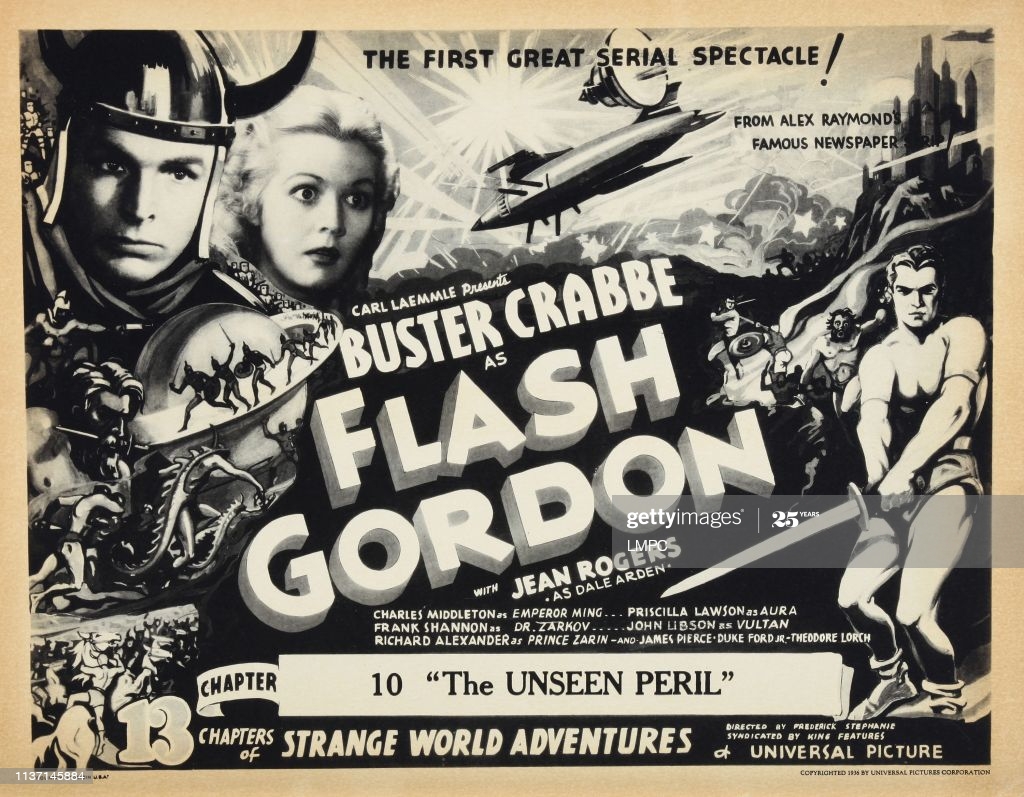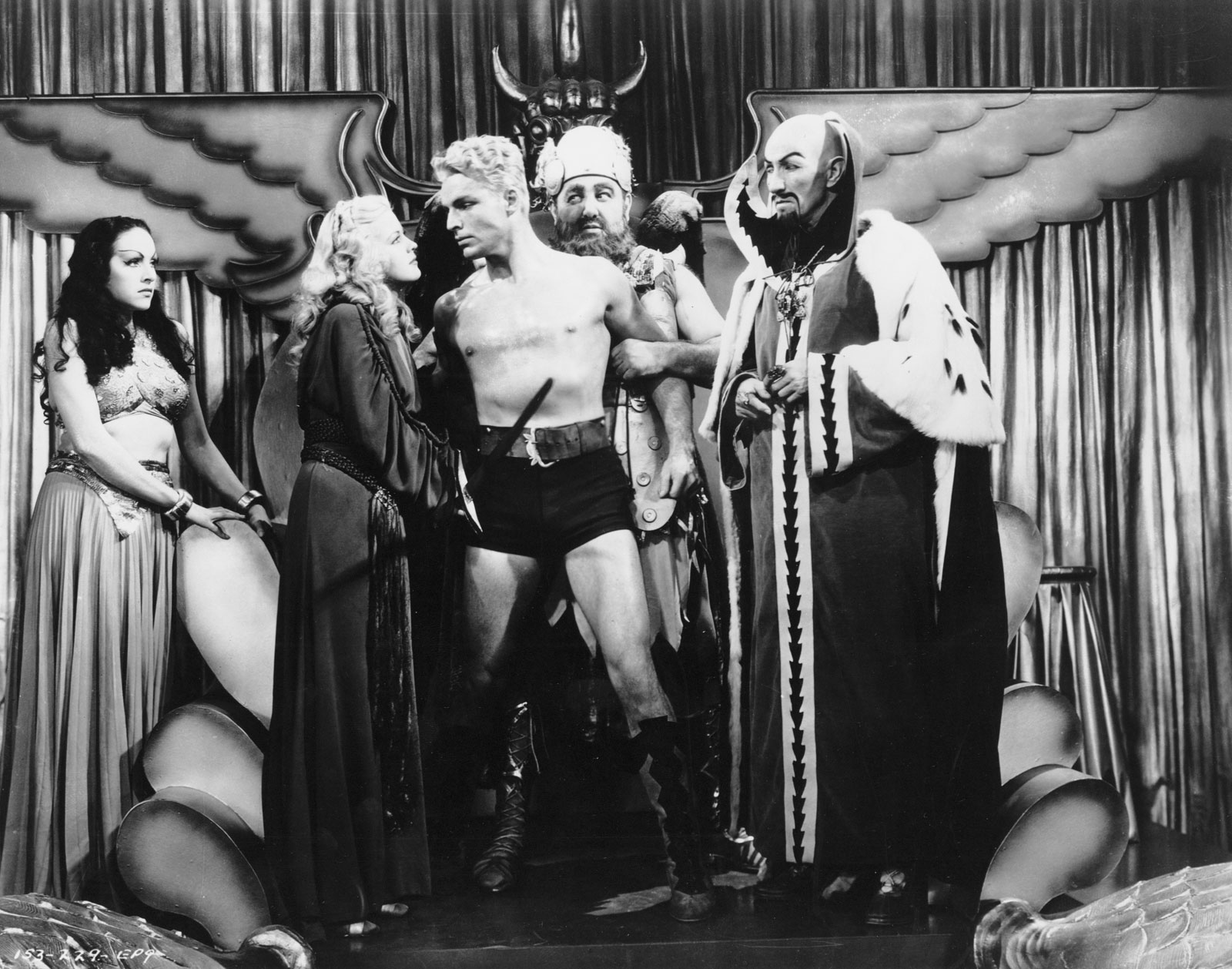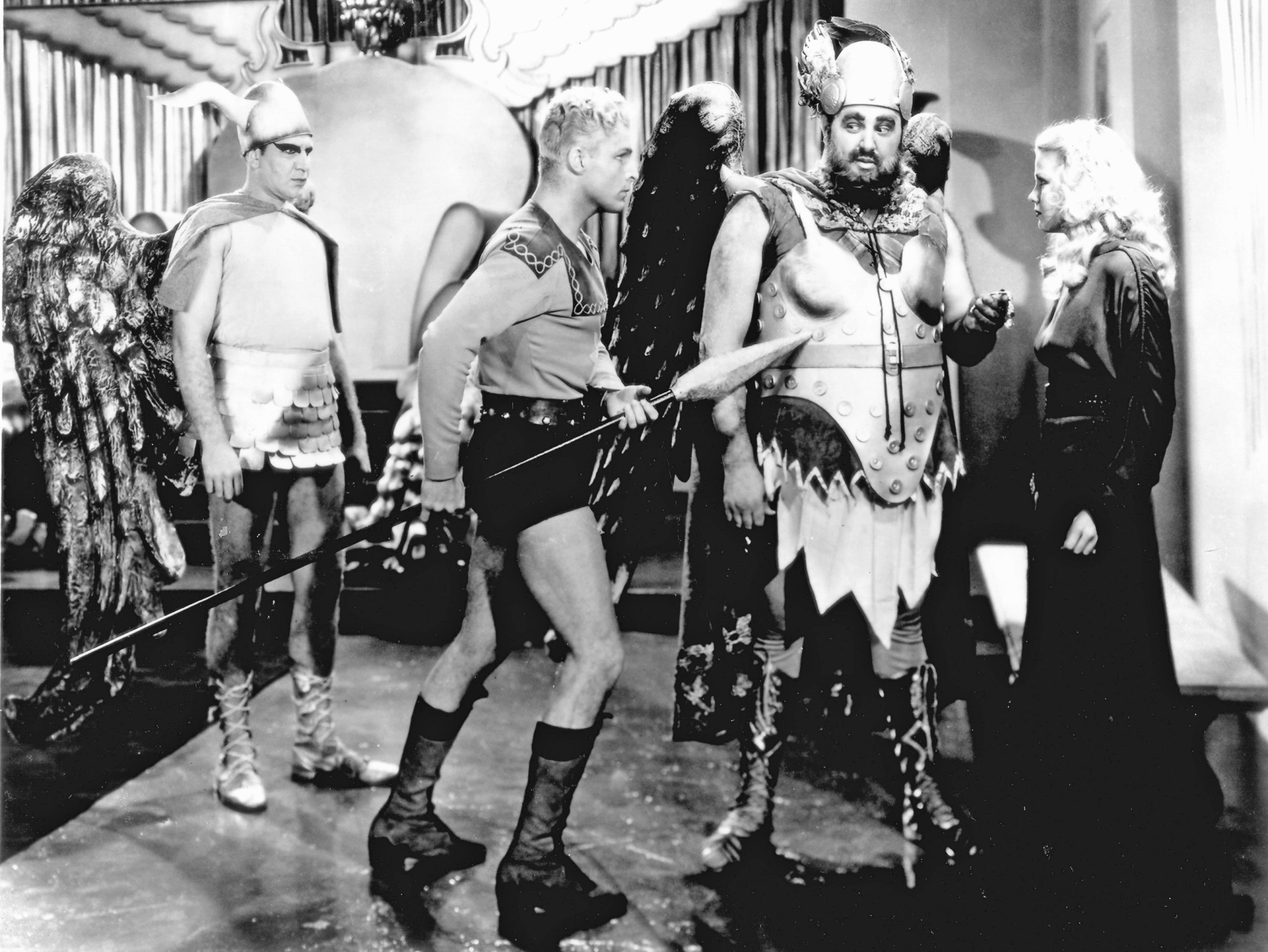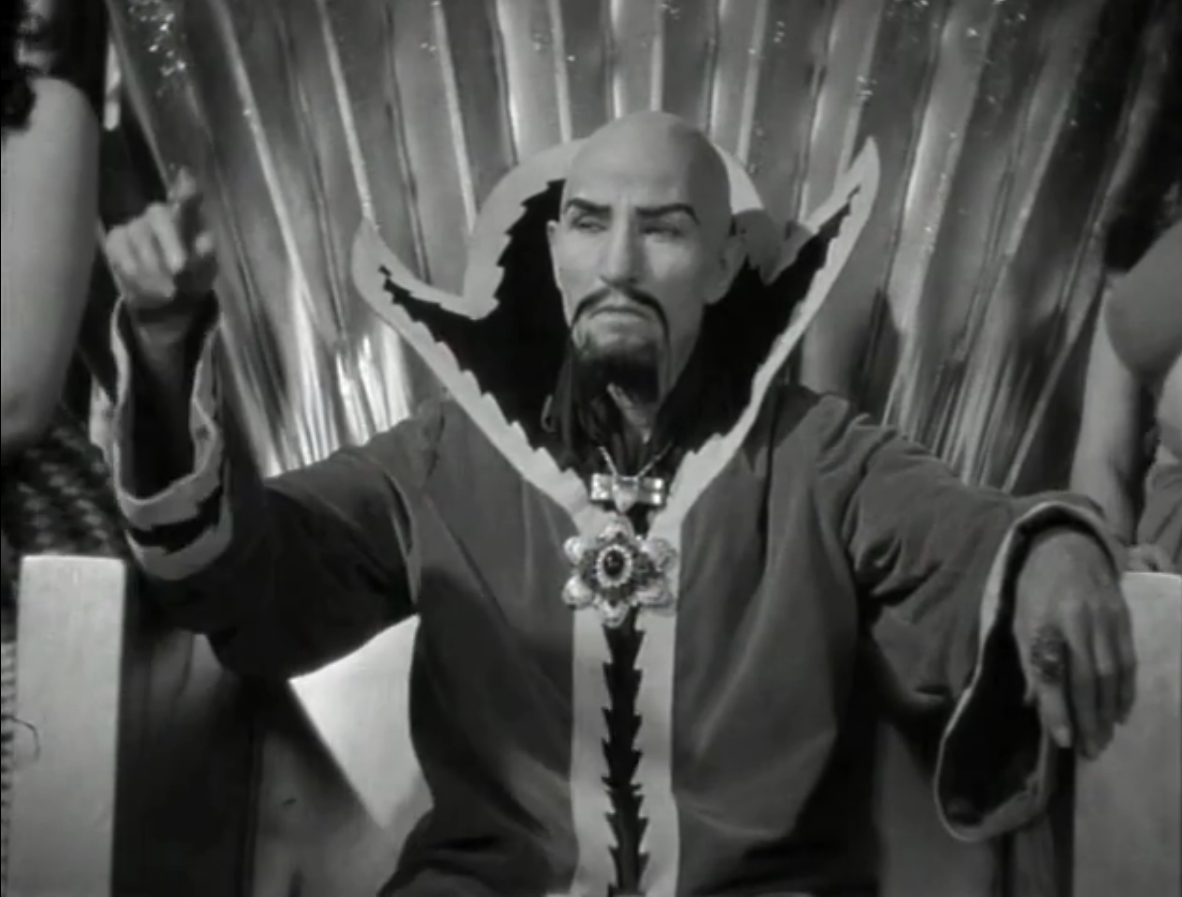Long before the rock group Queen was proclaiming that he was the “Saviour of the Universe” the character of Flash Gordon had first been adapted from his comic strip roots into a thirteen-part serial for Universal Pictures, in what was at the time the biggest budget serial ever produced. The character of Flash Gordon came about when King Features Syndicate failed to acquire the John Carter of Mars stories by Edgar Rice Burroughs for one of their syndicated comic strips – this being their attempt at competing with the popularity of the Buck Rogers strip – so instead they took inspiration from the Philip Wylie novel When Worlds Collide to create a new swashbuckling science-fiction hero of their own and enlisted artist Alex Raymond to bring the world of Mongo to life. The popularity of the stip led to Universal Pictures deciding that Flash Gordon would make a great hero for one of their serials and thus another pulp hero made the transition to the silver screen.
With the planet Earth seemingly doomed by an inevitable collision with a rogue planet the brilliant scientist, Dr. Alexis Zarkov (Frank Shannon ), builds a rocket ship to travel to said planet with the hopes of altering its trajectory. The scientific community, led by Professor Gordon (Richard Tucker ), considered Zarkov’s beliefs to be insane and wanted him stopped but lucky for humanity they fail, and proof that it is truly a small world Professor Gordon’s son Flash (Buster Crabbe), a professional polo player, just so happened to be aboard a plane that was in the neighbourhood of Zarkov’s laboratory. The atmospheric phenomenon, caused by the approaching rogue planet, forces all the passengers to bail out of the aircraft and Flash is forced to share a parachute with the lovely Dale Arden (Jean Rogers). The two stumble across Zarkov’s rocket ship and after a brief discussion they join the scientist on his trip to the planet Mongo. To say they were not greeted as friends by the residents of Mongo would be a vast understatement.
Though Princess Aura clearly wanted to be more than friends.
Universal Pictures budgeted this serial at $360,000, which was three times more than was typically allotted for a chapter play at the time, and the result was truly impressive – they did save some money by liberally borrowing props and sets from such Universal classics as The Hunchback of Notre Dame, The Mummy, Dracula’s Daughter and Frankenstein – but what gave this serial such lasting impact was its star Buster Crabbe whose portrayal of the pulp here become the gold standard. Larry “Buster” Crabbe was an Olympic medallist who made his way into the film industry as competition for fellow Olympian Johnny Weissmuller, and it was Crabbe’s incredible physique and square-jawed good looks that made him perfect casting for such roles and to date, he is the only actor who has played Flash Gordon, Buck Rogers and Tarzan of the Apes, the top three pulp heroes of the 1930s.
The Flash Gordon serial had all the standard tropes of the serials of the time, with every episode ending in a nail-biting cliffhanger, but what made this particular serial stand out among its peers was in the sheer scope of its science fiction setting. Not only was our square-jawed hero finding himself engaged in an array of endless fisticuff with a variety of goons of and henchmen but he also dealt and the machinations the femme fatale Princess Aura (Priscilla Lawson), a woman who would do anything to win the heart of Flash Gordon, including killing poor Dale Arden. Flash must also face off against space ships piloted by the noble Lion Men, a floating city operated by winged hawkmen and more than a few alien monsters who would give any hero reason to pause and reflect on their life choices.
Wait, didn't this monster show up on the original Star Trek series?
Of course, at the center of Flash Gordon’s problems is the nefarious Ming the Merciless (Charles Middleton), the cruel emperor of the Planet Mongo who will either destroy the Earth or enslave it – a tough choice that all universe conquering despots must make – and though he constantly fails at the simple task of killing one pesky Earthman he’s still one of cinema’s greatest villains brought to life, even if his genesis is rather dodgy at best. In this first Flash Gordon serial Ming was modelled on the character of Fu Manchu – an evil criminal genius and mad scientist – whose Asian look and traits clearly landed him in the unfortunate category of the “Yellow Peril” which was a racist ideology that stemmed from the belief that East Asians were an existential danger and threat to the Western world.
Dude, being evil is one thing but propagating a racial stereotype is just not cool.
There is a lot of fun to be had when watching these old serials but the Flash Gordon serial from Universal Pictures is especially fun as it brings more than enough thrilling action and derring-do to make any fan giddy with delight. If you like stalwart heroes, beautiful damsels and even more alluring Femme Fatales, then I advise you to check out this classic 1936 serial as it has all this and a whole lot more.






No comments:
Post a Comment